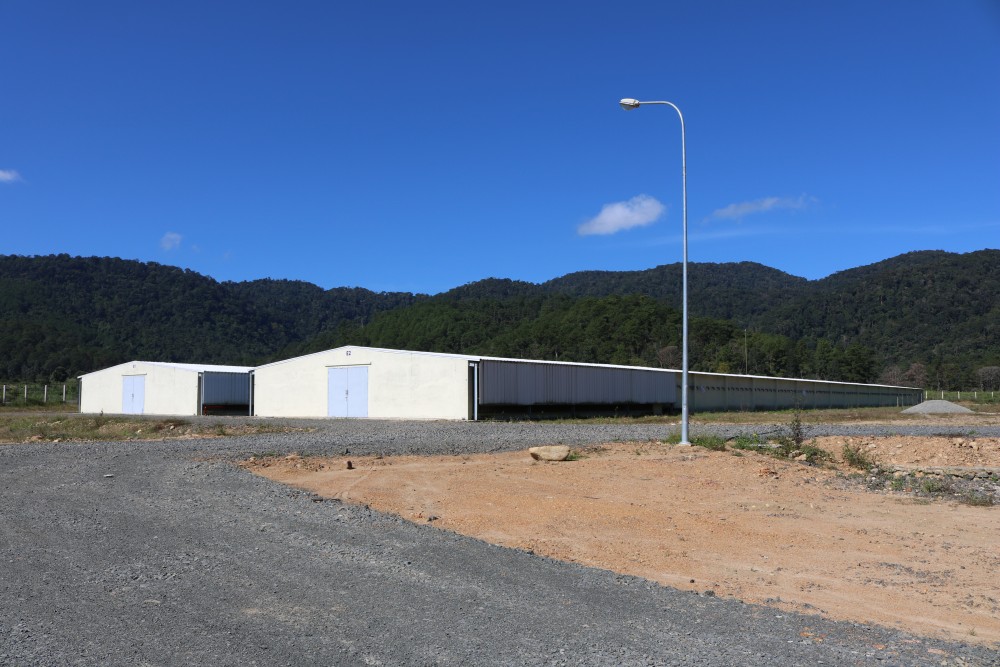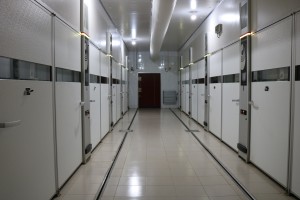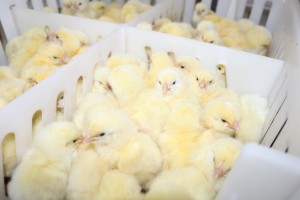Bel Ga promotes growth of independent farmers in Vietnam – Asian Poultry Magazine
Bel Ga JSC has been in Vietnam for three years and has a wealth of good poultry genetics which offers new opportunities for the poultry market, writes HA THU. The company achieved Global Gap certification in October 2016 and hopes to double its capacity by 2019.
Bel Ga JSC has established a name for itself among Vietnamese farmers and slaughterhouses. It is wholly owned by BDH Azie B.V, a private joint venture between Belgabroed, a leading producer layer and broiler DOC and hatching eggs in Belgium and De Heus Animal Nutrition.
It currently has two breeder farms with a capacity of 140,000 PS and a hatchery that produces 12 million DOC per year, based in Lam Dong province, in the central highlands of Vietnam.
Apt location
“Bel Ga’s DOC is acknowledged for its quality due in part to the strategic location of the production site. Initially people called it ‘crazy’, but now they see it as a smart move,” Nguyen Van Ngoc, Vice Chairman of Southeastern Poultry Association and also one of the biggest customers of Bel Ga, told Asian Poultry Magazine.
Lam Dong is one of five provinces located in the central highlands of Vietnam. Bao Loc city, around 200km away from Ho Chi Minh City, has a cool temperature ranging from 18 – 25 degrees Celsius without any major changes all year round.

Bel Ga is the exclusive poultry producer in this area. “These conditions are favourable and infrastructure has been improved to support transportation between this province and the big city,” Mr Ngoc said.
“Our first priority is the health of people and animals on the farm. Being far from centralised farming areas helps us minimize disease risks. Besides being isolated from other farms, we think Lam Dong also has a wonderful climate that is ideal for breeding stock,” Director of Bel Ga South East Asia, Kay De Vreese told Asian Poultry Magazine.

Biosecurity
Bel Ga’s biosecurity program is designed to meet international standards. “We offer our clients 100% traceability using our farm’s modern information system BIS (Breeder Information System),” said Mr Kay.
The breeder farms consist of closed house facilities with controlled ventilation and quarantine conditions. The whole system is designed to meet European standards with a buffer zone and sanitation zones with rigid procedures for those entering the farms.
These farms boast favorable conditions with nests placed in the shed at the center of the house for the chickens to produce fertilized eggs. The eggs are then collected in trays and transferred by special loading trucks to the hatchery. All the trays, trucks and related equipment are subjected to strict hygiene conditions. DOC are packaged inside the hatchery, then delivered to clients in loading trucks that are kept in a separate buffer zone.
Feed provided by De Heus is stored in a close storage area beside the breeder farms to avoid extra transportation that may incur unexpected disease risks.
The climate conditions within the houses are monitored and controlled by the Orion system, which provides real time data that Bel Ga’s specialists from Europe can access 24×7. They are able to offer advice to local management for optimum housing conditions for the breeder chickens.
Latest EU technology
The construction, design methods and equipment of Bel Ga’s breeder farms are carefully considered by both European and local experts to result in a highly efficient farm model.

Each house is equipped with VDL Agrotech products, such as automatic feeding and drinking systems.
“All our incubators and climate control system are provided by Petersime. We use Biostreamer for creating the optimal environment for hatching eggs.”
Adequate climate control is crucial for hatchability, chick quality and biosecurity. Embryos and chicks need sufficient fresh air, a suitable environmental temperature and adjustable humidity level.
“We also have an advantage by partnering with De Heus that offers good quality and safe feed to boost the integrity of our value chain.”
Banking on people
Be Ga boasts of a young, energetic, and skilled team lead. “We see in them a strong and flexible spirit, willingness to adapt and improve their skills to meet demands of the market and to support local farmers.

“We play football on the weekend, not only to maintain our health but also to engage with one another. We’re all equal on the playground and everybody is encouraged to share their problems and experiences,” Nhan Van Tran, Operations Director told Asian Poultry Magazine.
“The values we encourage are passion for the job; awareness of the environment and team support,” he added.
“One of the main reasons for these team activities is to offer our people a sense of camaraderie. Only when our people are both mentally and physically secure, will the animals’ be well taken care of.”
Bel Ga has its own canteen where food is cooked daily and distributed to different sections of the farms, both for farm biosecurity and for safe, nutritious and fresh meals for the staffs.
A reliable partner
Since the start, Bel Ga has defined its long-term investment strategy to produce high-quality chicks for independent Vietnamese farmers.
“We have tried to emerge as a reliable DOC supplier. Our job is not finished once our DOC is delivered to our customers’ farms. We share our knowledge to help customers achieve the best results by giving advice and technical guidance.”
Bel Ga brings in European specialists to visit the farms to regularly provide training for the staff and to monitor the data.
“We used to buy DOC from other companies in Dong Nai province because our farms are located in the same area. But since the productivity of those breeding sources fell short, we shifted to Bel Ga,” said Mr Ngoc.
“Bel Ga’s DOC are strong and healthy without any veterinary intervention. The Company does not apply any veterinary treatment to the DOC before selling to the market because the immune system of the chicks is inherently good.”
“We are happy to work with Bel Ga because their business model is sustainable, and they practice good production standards. They’re not only professional, but also reliable.”
Mr Ngoc operates two groups of white broiler farms in Dong Nai province with a total capacity of 700,000 broilers per cycle with five cycles per year.
Improving DOC quality
Vietnam’s Livestock Development Strategy 2020 – 2030, focuses on livestock breeding development, to reduce imports.
Bel Ga’s contribution, therefore, is crucial to this development. It raises Aviagen’s Ross 308 and Cobb-Vantress’ Cobb 500, to serve independent farmers.
“We acknowledge that it is important for Vietnam’s poultry sector to have a good locally produced breeding stock to gradually remove the burden of imports and improve the quality of Vietnamese chickens. But the market needs time to adapt.”

“We work with independent farmers and slaughterhouses who hold the complete ownership and responsibility for their inputs.”
According to the Institute of Animal Husbandry, every year Vietnam has to import 1.4 – 1.6 million white broiler breeder PS, valued at USD 4.2 – 5.0 million, and a large volume of unofficial cross-border imports from China.
“Besides supplying DOC, Bel Ga plays an active role in the four-party poultry supply chain model in which an independent DOC supplier, Feed supplier, Farmer and Slaughterhouse cooperate to stabilise broiler supply, quality and price. It is an alternative to the integrated model and turns independent farmers into entrepreneurs.
“Our entry into Vietnam was a bit late but still it was a good time to join the market as Vietnam is enjoying political stability, the economy is moving forward with the Trans Pacific Partnership and many important regional free trade agreements (FTAs).
“FTAs come with benefits and challenges in terms of competitiveness. In order to compete against imported meat, Vietnam’s local poultry and meat industry should enhance its productivity and effectiveness. Therefore, Bel Ga is here to support with high quality DOCs at reasonable prices,” Mr Kay added.
Source: Asian Poultry Magazine February 2017



Comments are closed.